low tannin red wines, full bodied, high alcohol, tannic red wines, and sweet red wines too. Let’s find out how.
Also known as: Corvina Veronese
Table of Contents
Primary Flavors
- Tart Cherry
- Cinnamon
- Chocolate
- White Pepper
- Green Almond
Taste Profile
The flavors and structure of the wine change dramatically depending on if the Corvina grapes are fresh or dried. The Appassimento method is used to dry the grapes.
On the nose, Corvina delivers tart red cherry, plum and herbal aromas.
Almond and pepper are also common. If the grapes are partially dried, as with Amarone you can find spice and chocolate notes and aging aromas of leather and earth too.
On the palate, when fresh grapes are used, Corvina doesn’t have a lot of color or tannin, but it does have high levels of acidity. Wines are light bodied and made in a dry style, similar to wines from Beaujolais. But, when dried grapes are used, such as with Amarone, tannins are high and grippy, with high levels of alcohol, and a hint of sweetness.
How to Serve Corvina Wine
If you have a Corvina wine that used fresh grapes, like Valpolicella, then you don’t need to decant. However, if you have a Corvina wine that has been made using dried grapes, like Amarone, then you should decant for 30 mins to one hour. The more robust wines, like Amarone tend to perform best in larger aroma collector glasses at slightly cooler-than-room temperatures to keep aromas fresh.
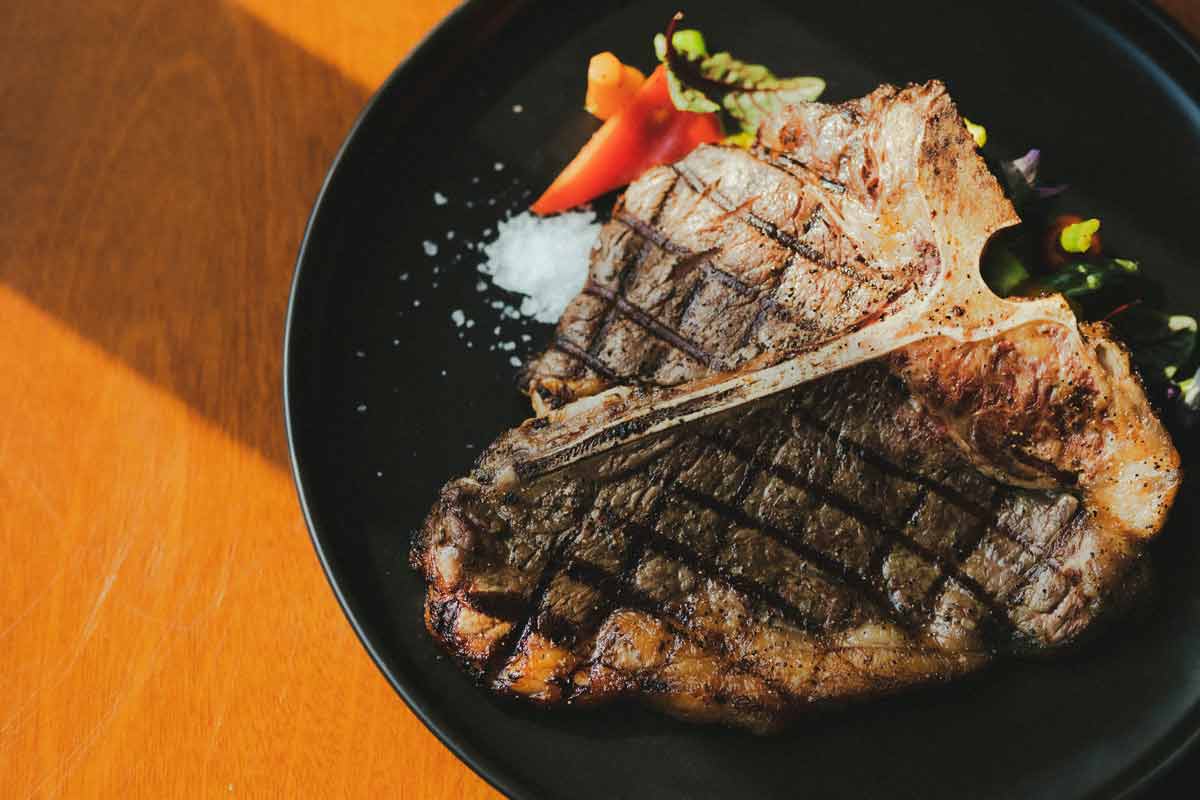
SERVE
55–60°F / 12-15°C
GLASS TYPE
Aroma Collector
DECANT
30 Minutes
CELLAR
5-10 Years
Corvina Food Pairing
The lighter bodied versions of Corvina made from fresh grapes, such as Valpolicella, are perfect for pairing with pizza, antipasti, bruschetta, and red pasta sauces, all of which work well with the refreshingly high level of acidity.
For the robust and high alcohol wines using dried grapes, like Amarone, try flame-grilled Porcini mushrooms, medium-rare t-bone steak, or a rich lamb stew, which will match the intense flavors of the wine.
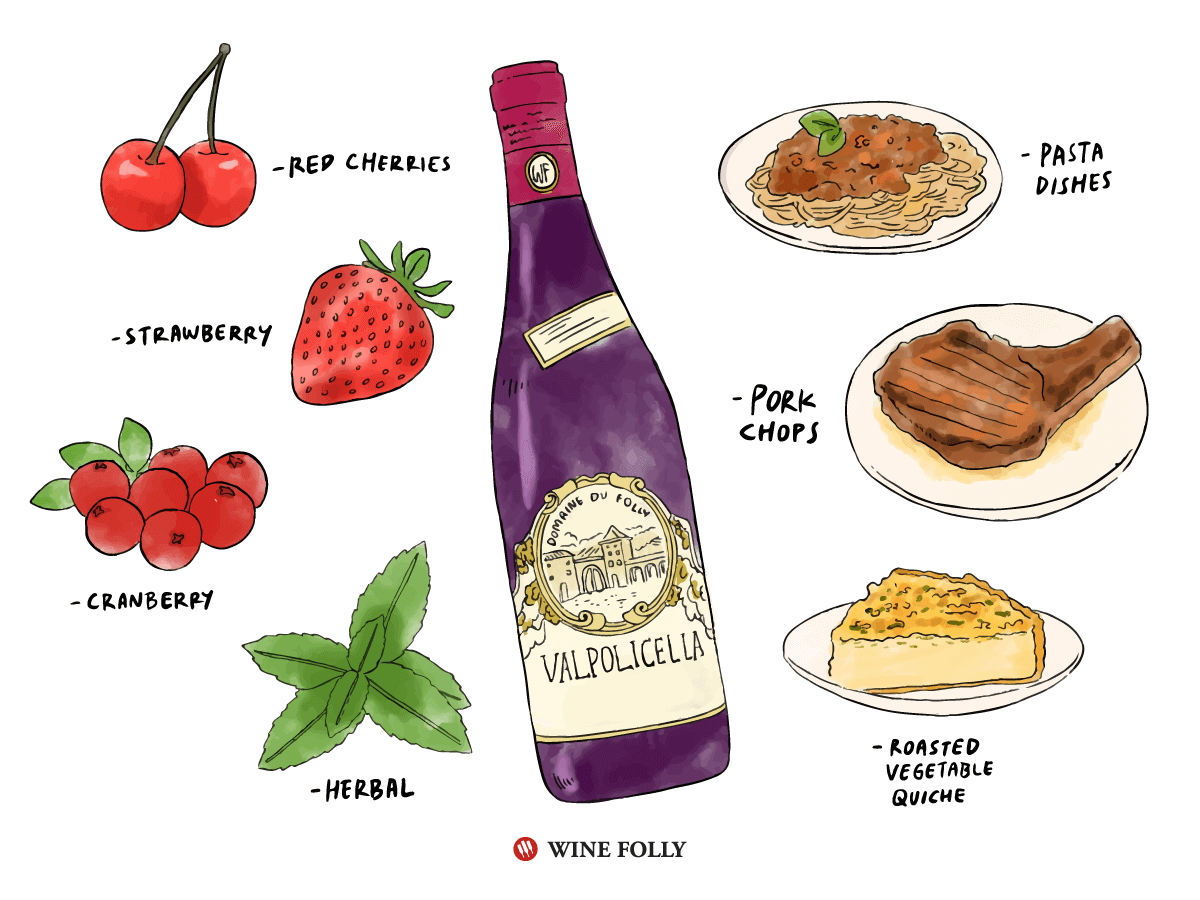
5 Fun Facts About Corvina
- Corvina is the most famous and best regarded red grape in the Veneto region of Italy.
- Corvina makes one of the most sought after wines in Italy, Amarone.
- All of the Corvina in the world (except a few hectares in Argentina) is found in Veneto.
- Corvina has thick skins, which makes it suitable for drying (appassimento method)
- Corvina is pretty much always blended with other local grape varieties such Molinara and Rondinella.
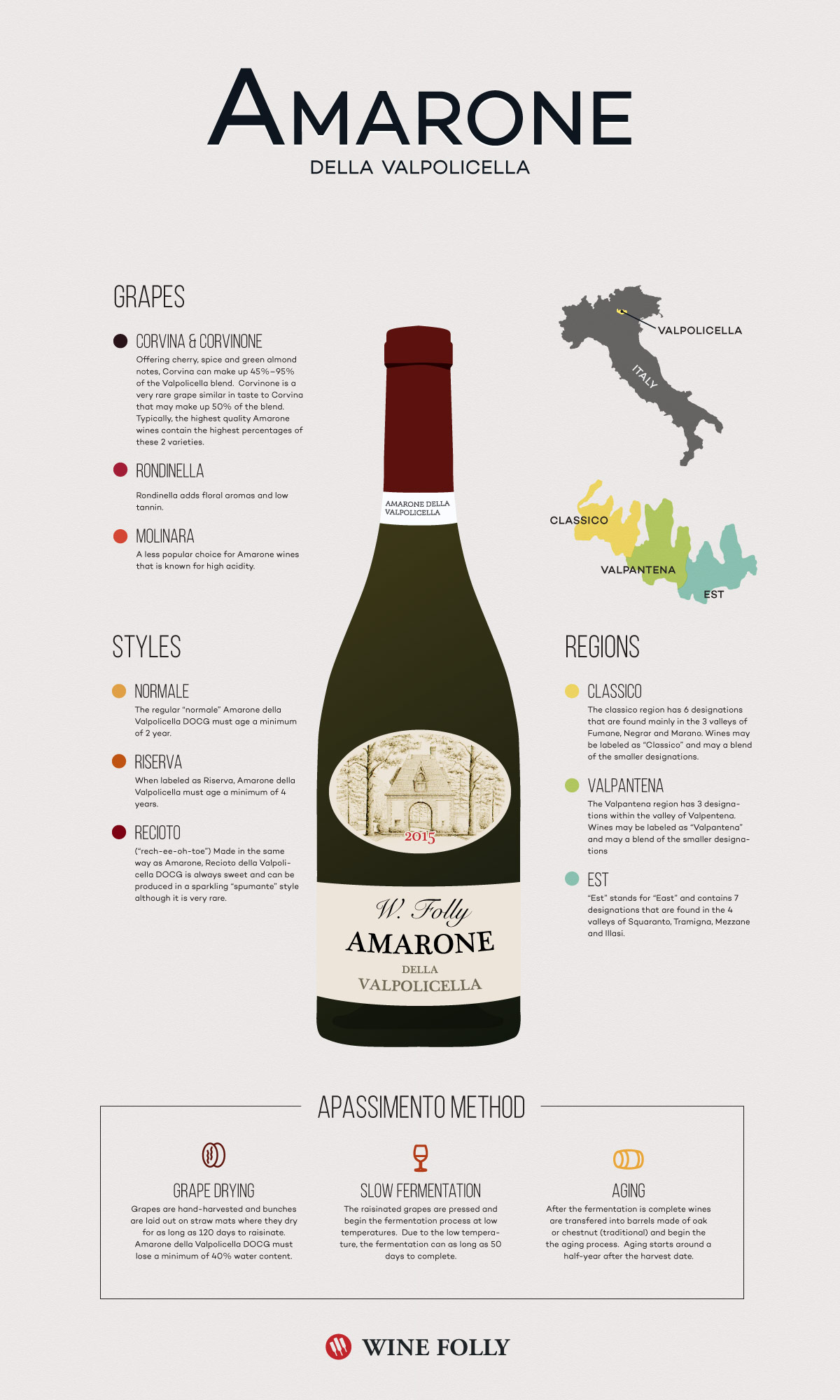
Where it Grows
There are just 15,419 acres planted throughout the world, and all but a handful of
those are in Northern Italy.
- Italy: 15,374 acres (6222 hectares)
- Argentina: 42 acres (17 hectares)
- Chile: 2.5 acres (1 hectare)
- Canada: 2.5 acres (1 hectare)
Total Vineyard Area – 15,419 acres (6240 hectares) (data from 2016)
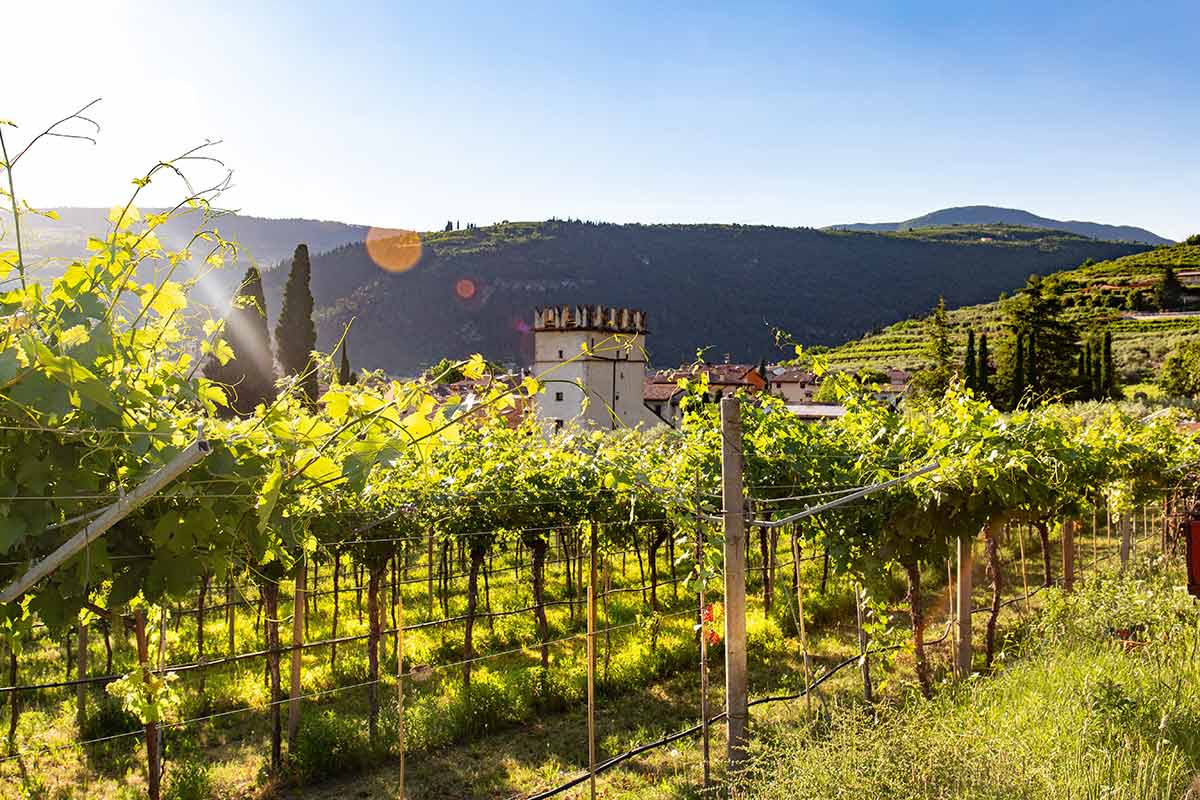
Italy
What to expect: From light bodied wines in Valpolicella to robust and tannic wines in Amarone, there’s a style of Corvina for everyone.
Corvina is at home in north-east Italy in the province of Veneto. There are many different Corvina based wines here with different styles. Check out the three main appellations that grow Corvina and what to expect from each one.
Valpolicella DOC is the perfect summer wine, a fresh, light bodied, easy drinking red wine, which you might even serve slightly chilled. Only fresh Corvina grapes are used for so expect fresh flavors, light body, not much tannin or color.
Amarone della Valpolicella DOCG is the perfect fireside wine. Expect bold, richly fruited, ageworthy red wine with high alcohol (15-16%) and high tannins. Partially dried grapes are used so the flavors and tannins become very concentrated.
Recioto della Valpolicella DOCG is a sweet red wine that is very complex and can age for decades. Expect all the flavors of Amarone but with intense sweetness. Partially dried grapes are used for this too.
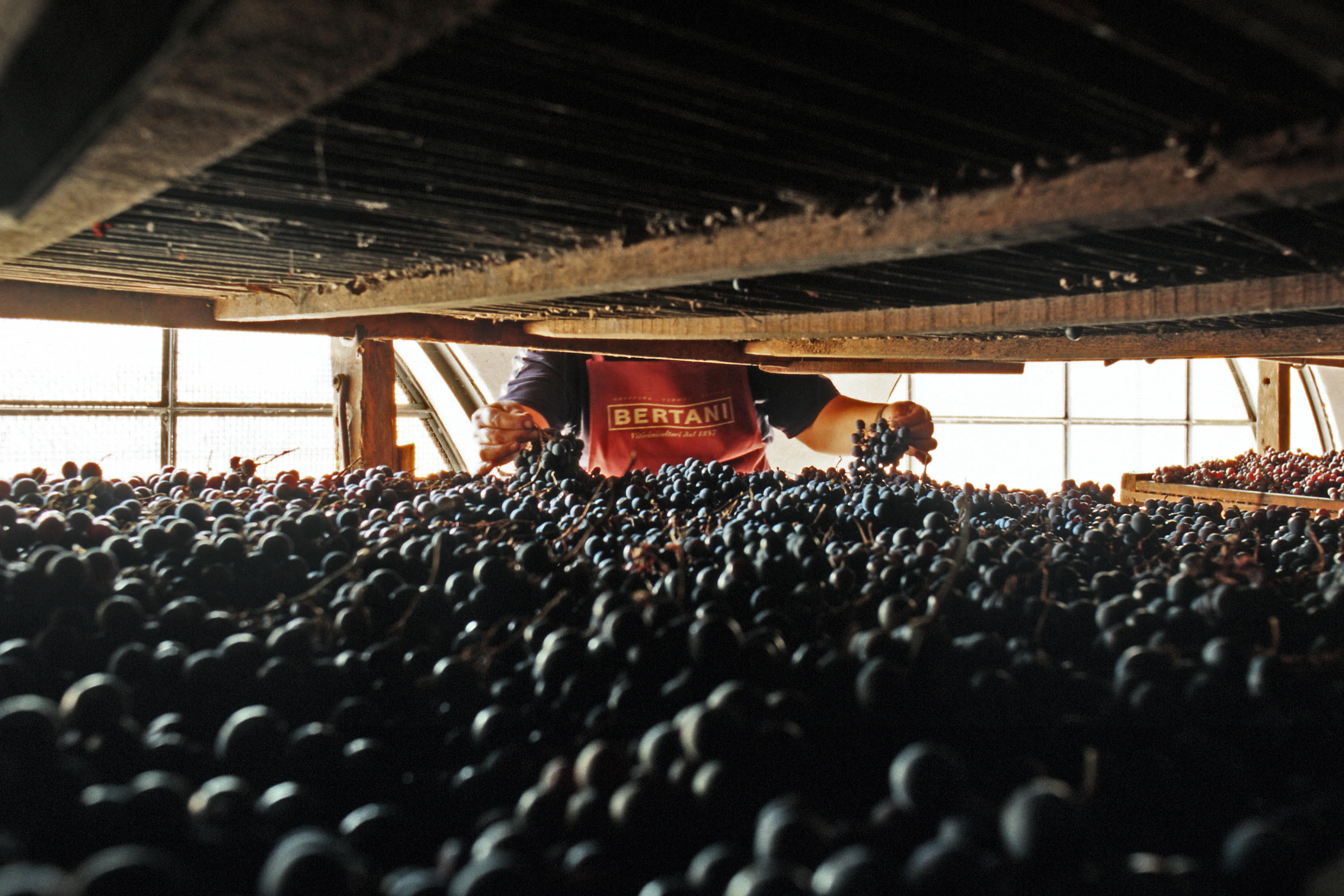
In-Depth Knowledge
Thanks to Corvina’s thick skins it can undergo a drying process called the Appassimento method.
Winemaker’s Secrets to Corvina
The Appassimento method, used to create Amarone and Recioto, concentrates the sugar, tannin, and acid in the grapes. That sugar is then turned into alcohol during fermentation. The resulting wines will have more acid, more alcohol, and more tannin, and flavors of dried cranberry, and dried cherry.
The process is actually pretty tricky. Only perfect bunches of healthy grapes, which are picked by hand, can be used. If any of the fruit is damaged, it will rot instead of shriveling and drying.
Winemakers lay out bunches in shallow trays, which are then placed in well aerated winery facilities to slowly dry out over 3-4 months. Humidity levels and the temperature are monitored precisely to prevent rot.
When the winemaker is happy, these partially dried Corvina grapes will go on to make Amarone or Recioto.
What about Ripasso?
People in the Veneto region don’t like to waste anything. And hence a new style
of wine made from Corvina was born – Ripasso.
Once Amarone is made – the skins of the partially dried Corvina grapes are normally thrown away, however, they still have lots of flavor, color, and even some sugar left in them.
Winemakers take their lighter bodied wines, such as Valpolicella, and add the Amarone skins to the wine. The result? Wines with more flavor, color, and tannin. The leftover Amarone skins beef up the wine.